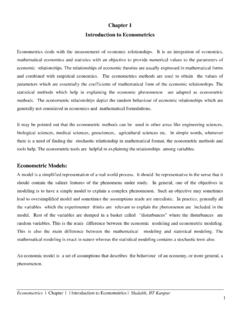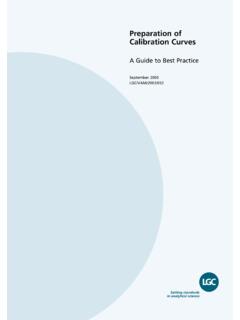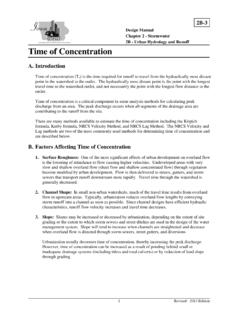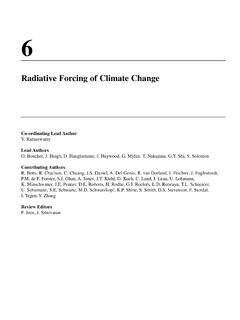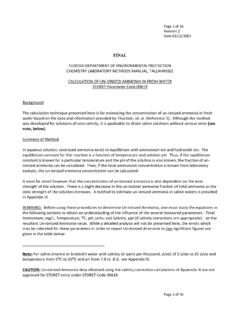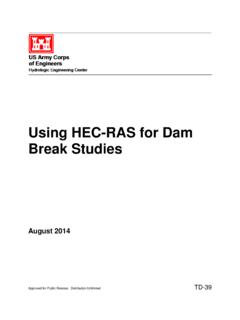Transcription of Particle Filters and Their Applications - MIT
1 1 Particle Filters and Their ApplicationsKaijen HsiaoHenry de Plinval-SalguesJason MillerCognitive RoboticsApril 11, 200522 Why Particle Filters ? Tool for tracking the state of a dynamic system modeled by a Bayesian network (Robot localization, SLAM, robot fault diagnosis) Similar Applications to KalmanFilters, but computationally tractable for large/high-dimensional problems Key idea: Find an approximate solution using a complex model rather than an exact solution using a simplified modelWhy should you be interested in Particle Filters ?
2 Because, like Kalmanfilters, they re a great way to track the state of a dynamic system for which you have a Bayesian model. That means that if you have a model of how the system changes in time, possibly in response to inputs, and a model of what observations you should see in particular states, you can use Particle Filters to track your belief state. Applications that we ve seen in class before, and that we ll talk about today, are Robot localization, SLAM, and robot fault why should you use Particle Filters instead of Kalmanfilters?
3 Well, the main reason is that for a lot of large or high-dimensional problems, Particle Filters are tractable whereas Kalmanfilters are not. The key idea is that a lot of methods , like Kalmanfilters, try to make problems more tractable by using a simplified version of your full, complex model. Then they can find an exact solution using that simplified model. But sometimes that exact solution is still computationally expensive to calculate, and sometimes a simplified model just isn t good enough. So then you need something like Particle Filters , which let you use the full, complex model, but just find an approximate solution Introduction to Particle Filters (Kaijen) Particle Filters in SLAM (Henry) Particle Filters in Rover Fault Diagnosis (Jason)44 Outline Introduction to Particle Filters Demo!
4 Formalization of General Problem: BayesFilters Quick Review of Robot Localization/Problem with KalmanFilters Overview of Particle Filters The Particle Filter Algorithm Step by Step Particle Filters in SLAM Particle Filters in Rover Fault Diagnosis55 Demo of Robot LocalizationUniversity of Washington Robotics and State Estimation Lab you see here is a demo from the University of Washington Robotics and State Estimation Lab. This is a frozen panel of the beginning of a robot localization task. The little blue circle is our best guess as to where the robot is now.
5 The little red dots are different hypotheses for where the robot might be at the beginning of the task, we have no idea where the robot is, so the hypotheses cover the entire space. As we ll see later, each hypothesis is called a Particle . The lines extending from the robot are sensor measurements taken by a laser rangefinder. The reason the linesextend well past the walls on the map is because the robot isn t actually inthat location. The robot movement comes from a person driving the robot manually; there is no automatic exploration going of Robot LocalizationUniversity of Washington Robotics and State Estimation Lab you watch the animated gif, the best-guess location of the robot will jump around as the most likely hypothesis changes.
6 As the robot moves and takes measurements, it figures out that most of the hypotheses it started with are pretty unlikely, so it gets rid of those. Pretty soon, the number of hypotheses is reduced to a few clouds in the hallway; the robot is actuallyin the hallway, but there s a lot of symmetry there, so it s not sure exactly where. Then it s down to two hypotheses, and when the robot finally enters a roomand looks around, it becomes clear that its current best hypothesis was actually Introduction to Particle Filters Demo!
7 Formalization of General Problem: BayesFilters Quick Review of Robot Localization/Problem with KalmanFilters Overview of Particle Filters The Particle Filter Algorithm Step by Step Particle Filters in SLAM Particle Filters in Rover Fault DiagnosisNow I will discuss the formalization of the general problem thatboth Particle Filters and Kalmanfilters solve, which is called Used for estimating the state of a dynamical system from sensor measurements Predict/update cycle Examples of BayesFilters: KalmanFilters Particle FiltersBayesFiltering is the general term used to discuss the method of using a predict/update cycle to estimate the state of a dynamical systemfrom sensor measurements.
8 As mentioned, two types of BayesFilters are Kalmanfilters and Particle variableuinputszobservationsddata (inputs and observations combined)Trying to find: belief about the current state p(xt| )Given: ut, zt, perceptual model p(zt| xt), action model p(xt| xt-1, ut-1)Now we introduce the variables we will be using. X is the statevariable, and Xtis the state variable at time t. U is the inputs to your system, z is the observations made by the sensors, and d just refers to inputs and observations together. What the BayesFilter is trying to find at any point in time is the belief about the current state, which is the probability of xtgiven all the data we ve seen so we are given is the inputs, the observations, the perceptual model, which is the probability that you ll see a particular observation given that you re in some state at time t, and the action model, which is the probability that you ll end up in state xtat time t, assuming that you started in state xt-1at time t-1.
9 And input ut-1to your Introduction to Particle Filters Demo! Formalization of General Problem: BayesFilters Quick Review of Robot Localization/Problem with KalmanFilters Overview of Particle Filters The Particle Filter Algorithm Step by Step Particle Filters in SLAM Particle Filters in Rover Fault DiagnosisNow I will give a quick review of robot localization and show what the problem is with doing localization with Localizationx = (x,y, )motion model p(xt| xt-1, ut-1):perceptual model p(zt| xt):So here s the robot localization problem.
10 You re trying to track the state x, which is made up of the (x,y) position of the robot as well as its orientation, theta. You have a motion model for the robot, which looks like the two figures in the top right. If you start at the left end of the straight red line, pointed to the right, and tell your robot to move forward some distance, you expect itto end up somewhere in that cloud due to wheel slippage and the like. Darker regions have higher probability. If you start at the left end of the wiggly red line, your robot will have even more wheel slippage while turning (and it sgoing a farther distance), and so the resulting position uncertainty cloud is also have a perceptual model for your robot, which is the probability that you ll see certain observations when you re in a particular state xt.










